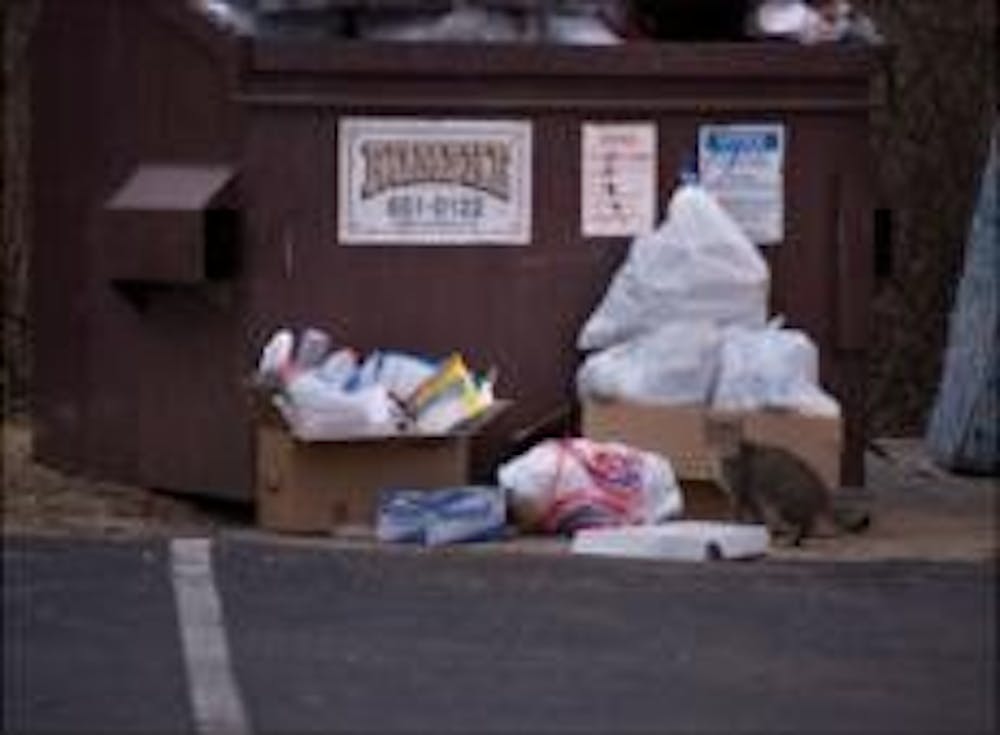
The Animal Friends Human Society took in more than 3,000 stray cats from Butler County in 2008.
Miami University graduate student, Susan Waizenhofer, grew a liking to the stray black and white cat that hung out around her Oxford house. It liked to walk around her legs and seemed friendly, until the December day when she decided to finally pet it.
"The cat approached me in my yard as I was taking my dog out, a usual encounter," Waizenhofer said. "I decided to pet him behind his ears. However, as I pulled away, the cat latched onto my wrist and swung his head ... causing the bite to go through my coat and skin."
Oxford city Animal Control Officer Wayne Phillips said stray cat attacks will usually only occur if the cats are touched or approached, even if the cat approaches the individual first. Petting strange animals is not smart, according to Phillips.
"Felines have the nastiest, most disgusting mouth in the entire animal kingdom," Phillips said. "I have had several people end up in the hospital on IV antibiotics from a cat bite."
According to Meg Stephenson, executive director of the Animal Friends Humane Society in Trenton, Ohio, the animal shelter took in 3,091 stray cats in Butler County in 2008.
Stephenson said homeless cats can be categorized into feral cats or abandoned household cats.
"Feral cats are typically unsocial to people and won't allow human contact," Stephenson said. "A household cat (is abandoned) if someone moves or faces a foreclosure on their home and they can't take their pet with them, (so they) leave the cat inside the house."
Although feral cats are often known as wild animals, Stephenson said they are not entirely undomesticated because they would not be able to live on their own without human support, such as dumpsters.
However, Stephenson said cold weather, lack of food sources and interferences with humans and other wild animals, including coyotes and raccoons, are serious threats to stray cats' lives.
"Sometimes people ... simply (poison) feral cats from the anti-freeze in their cars," Stephenson said.
Enjoy what you're reading?
Signup for our newsletter
The Animal Friends Humane Society animal shelter is limited in their efforts to save homeless cats since they are not required to be registered.
According to Phillips, cats are free-roaming animals and Oxford has no confinement regulations stating where cats may or may not go.
"Animal control cannot handle or pick up a cat unless it has bitten someone or it is a victim of cruelty," Phillips said. "If a cat gets sick or a cat lays down beside your house, there is a good chance there is no legal obligation to pick that cat up unless it bites someone or you've seen somebody do something to that cat."
Phillips said there are several simple approaches to discourage cats from roaming around private land, such as spraying a water hose at the cat to scare it away.
"Living conditions do not matter for cats," Phillips said. "They can live under your car or your deck. The only thing that matters (to them) is their food supply."
The most humane method of reducing the number of feral cats roaming Oxford is the trap, neuter, return strategy, according to Stephenson. The trap, neuter, return strategy inoculates the feral cat, fixes it so it is unable to reproduce and then it is released back to its environment.
"Cats can have litters two to three times a year of three to four kittens each," Stephenson said. "If they are trapped, then spayed or neutered and re-released onto the streets, they can continue living their lives but won't reproduce."
In addition to offering cats up for adoption, the Animal Friends Humane Society provides humane feral cat traps for those individuals who wish to turn in a cat.
"This is not cancer, this is not something we can't fix," Phillips said.




